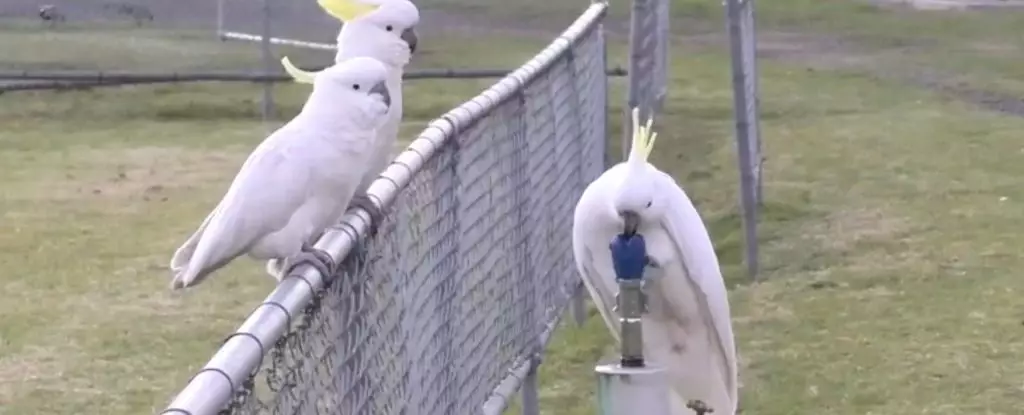In the bustling suburbs of Western Sydney, a fascinating spectacle has emerged that showcases the incredible adaptability of one of nature’s cleverest avian species—the sulfur-crested cockatoo (Cacatua galerita). Renowned for their intelligence, these birds have recently turned their attention to a new challenge: mastering water fountains to quench their thirst. This clever manipulation not only highlights their intelligence but also serves as a testament to their ability to adapt to the urban environment that humans have created. Such cleverness is not merely a quirky trait; it signifies less a parasite-like relationship with their environment and more a harmonious interplay where both species coexist and adapt.
Nature’s Observational Studies
The journey into understanding this cockatoo behavior began with researchers led by Barbara Klump at the Max Planck Institute of Animal Behavior in Germany. With empirical rigor, the team meticulously installed motion-triggered cameras at a local park fountain for 44 days, capturing the intricate dance of bird and fountain. The resulting data revealed that these birds made a staggering 525 attempts to access water, achieving success in a striking 41% of these endeavors. This outcome underscores not only their problem-solving prowess but also raises questions about the cognitive capabilities innate to these birds. When witnessing these feathered innovators engaging with their environment, one can’t help but marvel at their profound connection to their surroundings.
Social Learning: A Cultural Evolution
What truly sets this phenomenon apart is the idea of social learning. The apparent adoption of using fountains seems broader than mere trial and error. It indicates a cultural exchange among local cockatoo populations, as these avian residents share knowledge and strategies to optimize their interaction with human-made structures. The cockatoos are not solitary thinkers; they learn from one another, creating a community of resourceful aviators. This aspect of their behavior reflects a sophisticated level of social dynamics, demonstrating that even in the avian world, traditions and practices can evolve and be passed down through generations.
Beyond Basic Survival Instincts
Interestingly, the researchers noted that these birds didn’t just flock to the fountains during peak heat, which one might assume to be the primary motivation. Their frequent visits suggest a deeper preference for this water source, leading to speculation about taste or even the strategic advantages of using public fountains, such as enhanced visibility to deter predators. The cockatoos are challenging the boundaries of traditional thinking about animal behavior, presenting not just instinctual survival mechanisms, but preferences that hint at a more nuanced relationship with their environment.
A Celebration of Intelligence
In this bold dance between species, these cockatoos are more than just pests—they are deserving of admiration for their resourcefulness and ingenuity. Their flair for finding solutions to new challenges serves as a testament to the surprising intelligence that exists within the animal kingdom. As they queue like schoolchildren at the end of gym class for their turn at the fountain, we are reminded that intelligence is not a unique characteristic of humans; rather, it’s a spectrum that permeates all of life on Earth. In celebrating their cleverness, we must reconsider our interactions with the natural world, recognizing the wisdom inherent in being a part of this broader ecosystem. The cockatoo’s antics are not just amusing; they are a clarion call to appreciate the extraordinary capabilities of our avian neighbors.

